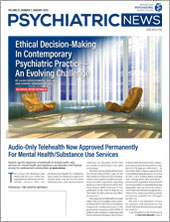The rate of opioid overdose deaths is rising faster for Blacks and other people of color compared with Whites, and current public health measures seem to be failing to reach these individuals.
One recent study of 8.3 million people living in 67 communities found that the rate of opioid overdose deaths stayed about the same between 2018 and 2019, about 40 deaths per 100,000. While the rate held steady for Whites, opioid overdose deaths for Black people shot up 38%. The data, published in the American Journal of Public Health, add to the evidence of worsening disparities in opioid overdose deaths by race.
“An antiracist public health approach that explicitly examines the role of racism is urgently needed in research, public health, and policy approaches to address the crisis of opioid-related harms,” wrote lead author Marc R. Larochelle, M.D., M.P.H., an assistant professor at Boston University School of Medicine, and colleagues.
Larochelle and colleagues compiled death certificate data for 67 U.S. communities, all with substantial opioid overdose rates. Their follow-up analysis of overdose deaths in four states found similar increases for Blacks compared with Whites of 57% in Kentucky, 34% in Massachusetts, 24% in New York, and 33% in Ohio in 2019, compared with the previous year.
Why are Blacks and other minority Americans dying at a higher rate from overdoses, and what can be done to help these individuals? Nora Volkow, M.D., director of the National Institute on Drug Abuse, wrote in a commentary in Drug and Alcohol Dependence that the crisis is about pain, not necessarily physical, but rather that which is inflicted by societal exclusion, rejection, and condemnation. “Systemic challenges encountered by Black Americans and other minorities in education, the job market, housing, health care, and the legal system (e.g., overpolicing, and arrests for drug-related crimes) combine to limit achievement and produce hopelessness, as well as poorer health.”
There are barriers to treatment and harm reduction services for Black and other minority Americans, Larochelle said. “We have developed an approach to opioid use treatment and services that has benefited White people disproportionately.” For example, buprenorphine services, which make treatment easier to obtain, are typically located in areas where White people live; methadone clinics, which require daily visits and make it harder for patients to maintain employment, are more likely to be in predominantly Black areas. “Naloxone distribution is similarly inequitable,” he said.
The “first wave” of deaths from prescription opioid overdoses that began at the turn of the century primarily impacted White people and resulted in a public health approach of compassion and treatment toward them, according to a study published in Addiction last March. Among Blacks there was at first a persistently low rate of opioid overdose deaths, until the street emergence of synthetic fentanyl in 2013. Since then, the tide has shifted: Annual increases in opioid overdose deaths among Blacks were twice as high compared with Whites (26% a year versus 13% a year) from 2013 to 2018, the authors found.
Another driver of opioid overdose deaths among Blacks and other minorities is the contamination of other illicit substances—methamphetamine, cocaine, and counterfeit prescription pills—with far deadlier fentanyl, Larochelle said. “These are people who are overlooked by existing opioid harm reduction services like naloxone—and they aren’t eligible for opioid use disorder treatment because they don’t intentionally use opioids—yet they’re dying,” Larochelle said. The problem is difficult to measure because postmortem toxicology reports cannot reveal whether a person intentionally ingested fentanyl or was unaware of its presence.
Long-term racial inequities in policing as well as U.S. drug policy also play a role in opioid overdose disparities. Laws enacted in the 1980s set mandatory prison sentences that were far harsher for crack cocaine, which was used more often by Black people, than those for pricier powder cocaine, which was more often used by Whites. For example, individuals caught distributing just 5 grams of crack received a five-year minimum federal prison sentence, whereas only those distributing at least 100 times as much powder cocaine (500 grams) received a five-year federal sentence.
The impact trickles down: Prison diversion programs extend substance use treatment and a chance at a clean slate to individuals who are at risk of overdose, yet those with prior convictions are often excluded. A study published in Drug and Alcohol Dependence last September found that among New York City residents who died of an unintentional overdose between 2008 and 2015, Blacks and Latinos were twice as likely as Whites to have prior felony convictions that would have excluded them from such help. “Diversion programs that restrict eligibility based on prior involvement [in the criminal legal system] will have racially disparate effects,” the authors concluded.
“It doesn’t take looking too hard to see structural racism affecting many areas of substance use treatment programs and policies,” Larochelle said.
Ironically, aggressive reductions in opioid supply may have also hastened overdoses: A JAMA study published last August showed that patients receiving opioid therapy for pain who underwent tapering were 68% more likely to overdose on opioids and more than twice as likely to experience a mental health crisis.
There is more evidence that sudden reductions in the availability of prescription opioids may increase use of heroin or fentanyl. A study by Larochelle and colleagues published in JAMA Internal Medicine found that the modification to OxyContin to make it more abuse deterrent, combined with the removal of Darvocet from the U.S. market, both in 2010, were associated with amplified heroin overdoses, which increased by 23% that same year.
“It’s much easier to blame a pill and focus on physician prescribing habits than it is to say ‘I want to have a syringe service program in my neighborhood or town’ or to say ‘I’m willing to have a methadone clinic in my neighborhood.’ What we need instead is for people to talk openly about this as a chronic relapsing medical condition instead of a moral failing,” Larochelle said.
HEALing Communities Study
The goal of Larochelle and colleagues’ most recent study is to support a proactive approach to the opioid epidemic by providing more timely data on the demographics of opioid overdose deaths in the communities studied. It is intended to guide the activities of the $350 million implementation science study known as the HEALing Communities Study (HCS). The communities chosen have embraced an ambitious target: a 40% reduction in opioid overdoses over three years.
The effort involves connecting people with an entire menu of evidence-based strategies: overdose education, naloxone distribution, safer opioid prescribing, and medication treatment, with an emphasis on treatment retention beyond six months and reducing treatment stigma, Redonna Chandler, Ph.D., director of the HCS at the National Institute on Drug Abuse, told Psychiatric News.
Now in its third year, each community in the HSC will choose its target venues and communication distribution plans; whereas some might advertise with billboards, others may choose a greater social media presence, coffee sleeves, or print materials handed out at events, Chandler said. All communities will coordinate across providers and agencies, from health care to justice to behavioral health, she said.
When a traditional study ends, researchers often learn during follow-up that a site couldn’t maintain an intervention, even in cases where it was helping. “We’re hopeful that the community involvement will lead to longer sustainability of changes,” Chandler said.
How will HCS address the needs of minorities? Chandler said that at the front end, the study specifically selected communities with racial and ethnic diversity. “The pressure of this study is that we want to act very quickly because people are dying. One of the easiest things to do would be to take the things that are working and do more of them. Yet that has the potential to worsen racial disparities,” Larochelle said.
Some strategies to expand the reach of services include mobile treatment vans that bring substance use treatment and harm reduction services to patients where there are no existing brick and mortar clinics. In addition, new transportation services have been added to ferry patients to specialty treatment providers from neighborhoods without such services. Program staff are also reaching out to at-risk individuals who use stimulants and other illicit substances to provide them with naloxone/harm reduction kits, as well as partnering with existing ethnic and minority associations in the communities to target overlooked populations.
Actions for Psychiatrists
What can psychiatrists do to address disparities? A recent AMA report showed that more than 100,000 physicians and other clinicians have obtained an X-waiver (an increase of 70,000 since 2017) to prescribe buprenorphine to treat patients with opioid use disorder. Still, it is estimated that 80% to 90% of people with a substance use disorder receive no treatment.
Larochelle urged psychiatrists to serve in communities of color and accept Medicaid so people can afford to access their services. Even volunteering one hour a week at a free clinic can be helpful, he added.
“Psychiatric care is increasingly hard to access, and a lot of psychiatrists have cash-only based services. Someone may not see themselves as part of the problem, but if you’re operating in that way, you’re really pricing out many people from being able to reach care.” ■
“Disparities in Opioid Overdose Death Trends by Race/Ethnicity, 2018-2019, From the HEALing Communities Study” is posted
here.
“Racial Disparities in Criminal Legal System Involvement Among New York City Overdose Decedents: Implications For Diversion Programs” is posted
here.
AMA’s overdose epidemic report is posted
here.
“Association of Dose Tapering With Overdose or Mental Health Crisis Among Patients Prescribed Long-term Opioids” is posted
here.
“Rates of Opioid Dispensing and Overdose After Introduction of Abuse-Deterrent Extended-Release Oxycodone and Withdrawal of Propoxyphene” is posted
here.

